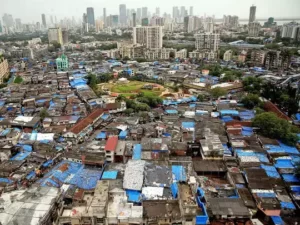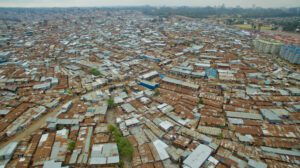Dharavi, Mumbai’s moving heart, is regarded by many as one of the biggest slums in Asia. One million or so people live there, and its industries bring in roughly $1 billion a year in revenue. Discover how immigrants overcame obstacles to settle in this community, hear about their entrepreneurial endeavors, and dispel common misconceptions about slums.
Slum tours are a kind of tourism that has emerged in response to the traveler’s desire for genuine and one-of-a-kind experiences. Kibera in Nairobi and Dharavi slum tour in Mumbai are prominent locations for these excursions. With a focus on the significance of responsible tourism and the contribution tourists can make to these communities, let us explore the unique stories of each.
Dharavi: Mumbai’s Busy Little Neighborhood

Let us start talking about Dharavi, located in the heart of Mumbai. A slum tour of Mumbai takes you through this dynamic culture. First, meet at the designated meeting place with your experienced guide. Afterwards, set out on an unparalleled adventure. Explore Dhobi Ghat, Asia’s most oversized outdoor laundry, where a vibrant population toils nonstop to clean the city’s clothing. Take a seat on a Mumbai tours, a famous local train, and see the city’s everyday life, then be ready for a real adventure. Traveling to Dharavi, Asia’s biggest slum, will let you feel the rush of the commute.
Economic Center: Small Businesses at Work:
The largest slum in Asia, Dharavi, resembles a bustling small town with modest factories serving as the hub of the neighborhood. A Dharavi slum tour demonstrates how the people there are dynamic and imaginative, and how, despite the tiny alleys, entrepreneurship and collaboration keep the community vibrant.
Developing Better Communities:
Cooperating to Create a Better Future Numerous organizations, including social enterprises and NGOs, are strengthening the community in Dharavi. By taking a reflective stroll around the slum, you join in on these initiatives, fostering a relationship between tourists and residents. Everyone benefits from this exchange of ideas as they learn about the community’s issues and the potential for constructive change.
Kibera: A Tale of Bravery and Courage in Nairobi

Kenya’s vibrant city, Nairobi, is home to various neighborhoods, each with a distinct personality. Kibera is a close-knit community with a strong sense of unity among its members rather than just a place. The people of Kibera have a fantastic sense of togetherness and collaboration despite their many difficulties. Unmatched communal relationships are forged in Kibera, creating a network of support that aids people in overcoming the challenges of day-to-day living.
Human Tales Beyond Numbers:
Kibera, known as the biggest slum in Africa, is where statistics frequently overshadow the personal tales in its cramped lanes. Going on a slum tour in Kibera is a way to get to know strong, tenacious people who are all part of the community’s colorful fabric despite their differences in numbers.
Cultural Vibrancy: Art, Music, and Ties to the Community:
Take part in Kibera’s vibrant cultural scene, which combines music, art, and a sense of community. Visitors can witness the vitality that endures even in the face of adversity as local artists use their skills to tell tales of hope and perseverance.
Selecting a Destination Is Not Enough to Make an Ethical Travel Selection
There’s more to selecting between Kibera and Dharavi than where to go. It entails making a commitment to travel responsibly, showing respect for the communities where you are visiting, and improving their quality of life. Search out tour companies that value upholding moral principles, contributing to the community, and promoting sustainable growth.
Conclusion
A tour of a slum could be life-changing, whether you choose to see the vibrant Dharavi microcosm or the sturdy Kibera tapestry. This presents a chance to question preconceived beliefs, promote intercultural comprehension, and actively engage in these communities’ stories.





